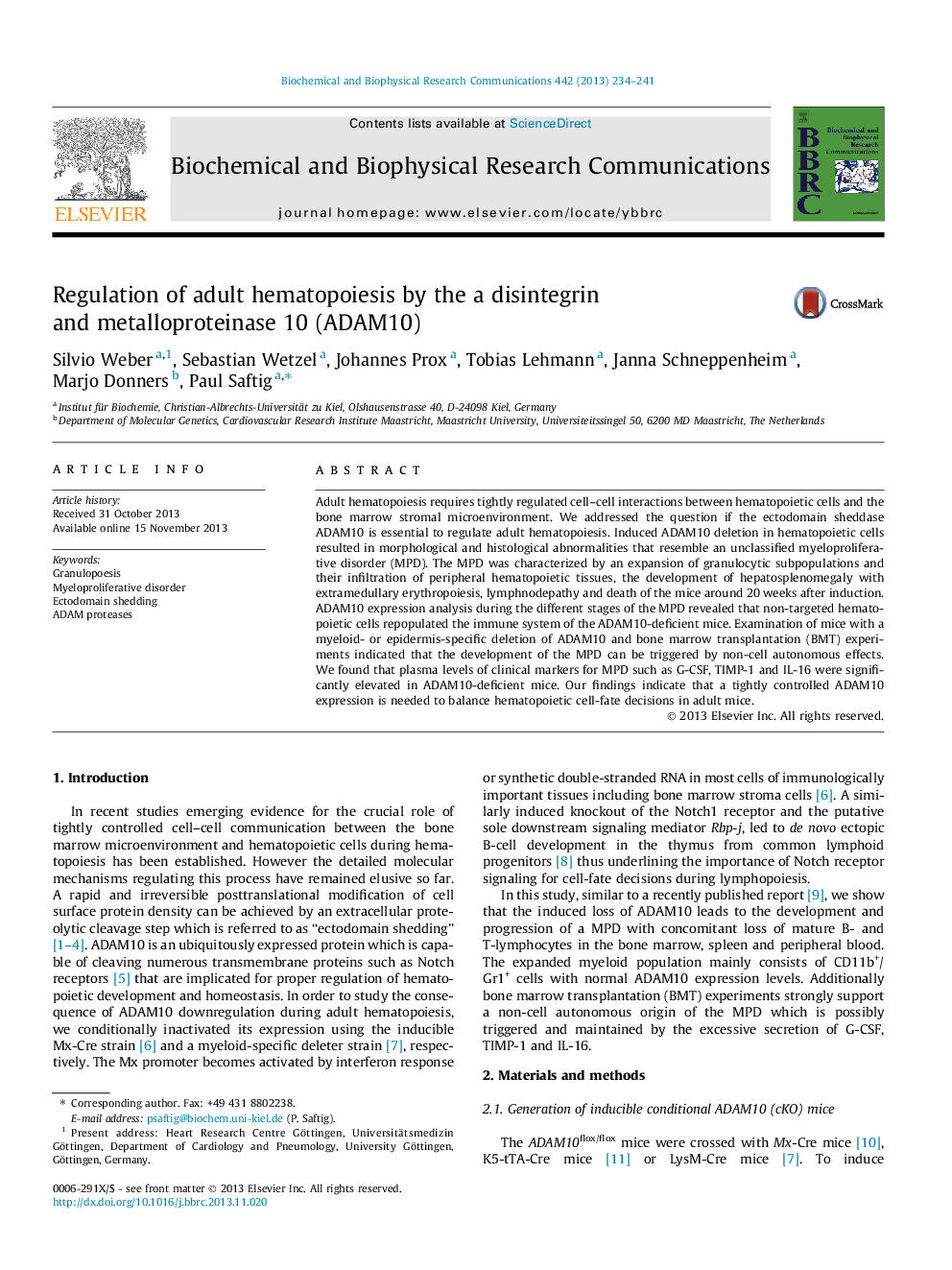| Article ID | Journal | Published Year | Pages | File Type |
|---|---|---|---|---|
| 8297404 | Biochemical and Biophysical Research Communications | 2013 | 8 Pages |
Abstract
Adult hematopoiesis requires tightly regulated cell-cell interactions between hematopoietic cells and the bone marrow stromal microenvironment. We addressed the question if the ectodomain sheddase ADAM10 is essential to regulate adult hematopoiesis. Induced ADAM10 deletion in hematopoietic cells resulted in morphological and histological abnormalities that resemble an unclassified myeloproliferative disorder (MPD). The MPD was characterized by an expansion of granulocytic subpopulations and their infiltration of peripheral hematopoietic tissues, the development of hepatosplenomegaly with extramedullary erythropoiesis, lymphnodepathy and death of the mice around 20Â weeks after induction. ADAM10 expression analysis during the different stages of the MPD revealed that non-targeted hematopoietic cells repopulated the immune system of the ADAM10-deficient mice. Examination of mice with a myeloid- or epidermis-specific deletion of ADAM10 and bone marrow transplantation (BMT) experiments indicated that the development of the MPD can be triggered by non-cell autonomous effects. We found that plasma levels of clinical markers for MPD such as G-CSF, TIMP-1 and IL-16 were significantly elevated in ADAM10-deficient mice. Our findings indicate that a tightly controlled ADAM10 expression is needed to balance hematopoietic cell-fate decisions in adult mice.
Related Topics
Life Sciences
Biochemistry, Genetics and Molecular Biology
Biochemistry
Authors
Silvio Weber, Sebastian Wetzel, Johannes Prox, Tobias Lehmann, Janna Schneppenheim, Marjo Donners, Paul Saftig,
